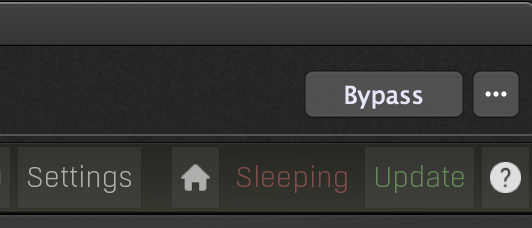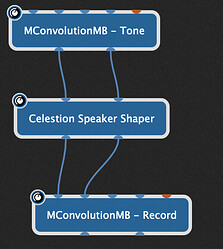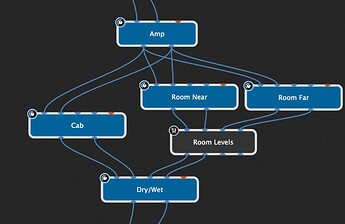I’ve got a few Melda plugins, one of which is MConvolutionMB (impulse response loader/player and also recorder). When I first bought it, I tested the IR record feature on an Arturia spring reverb plugin - and I thought it worked really well.
Today I was testing out the new Softube plugin Celestion Speaker Shaper (guitar speaker/cabinet simulator). I’ve haven’t looked into the technical details of how it works (e.g. maybe a hybrid of impulse responses and custom EQ) but I found it really quick and easy to get great results - I particularly like it’s room effect. However, when the room effect is engaged the CPU jumps up substantially.
I decided to give the IR record feature another go - I took separate recordings of the dry speaker/cabinet, the ‘near’ room effect (100% wet) and ‘far’ room effect (100% wet). The actual recording in MConvolutionMB takes only a few seconds to setup - connect a plugin before and after Speaker Shaper, then press Record on the post plugin, and Test Tone on the pre plugin, and then stop recording on the post plugin. It then prompts you to save the IR.
My replacement chain in GP has a separate instance of MConvolutionMB as the IR player for each of the captured IR’s: Cab, Room Near and Room Far.
I’m actually struggling to hear any difference between the original and my IR’s (that aren’t due to simple level differences). But importantly, the GP CPU reading is now 25% instead of 50%!
Note:
By default, Melda plugins auto sleep/bypass when there is no input detected by the plugin e.g. highlighted by the ‘Sleeping’ label at the top of the plugin.

Because the first instance of MConvolutionMB does not have anything connected to its input, click ‘Settings’ at the top of the plugin and then untick the ‘Intelligent sleep on silence’.







